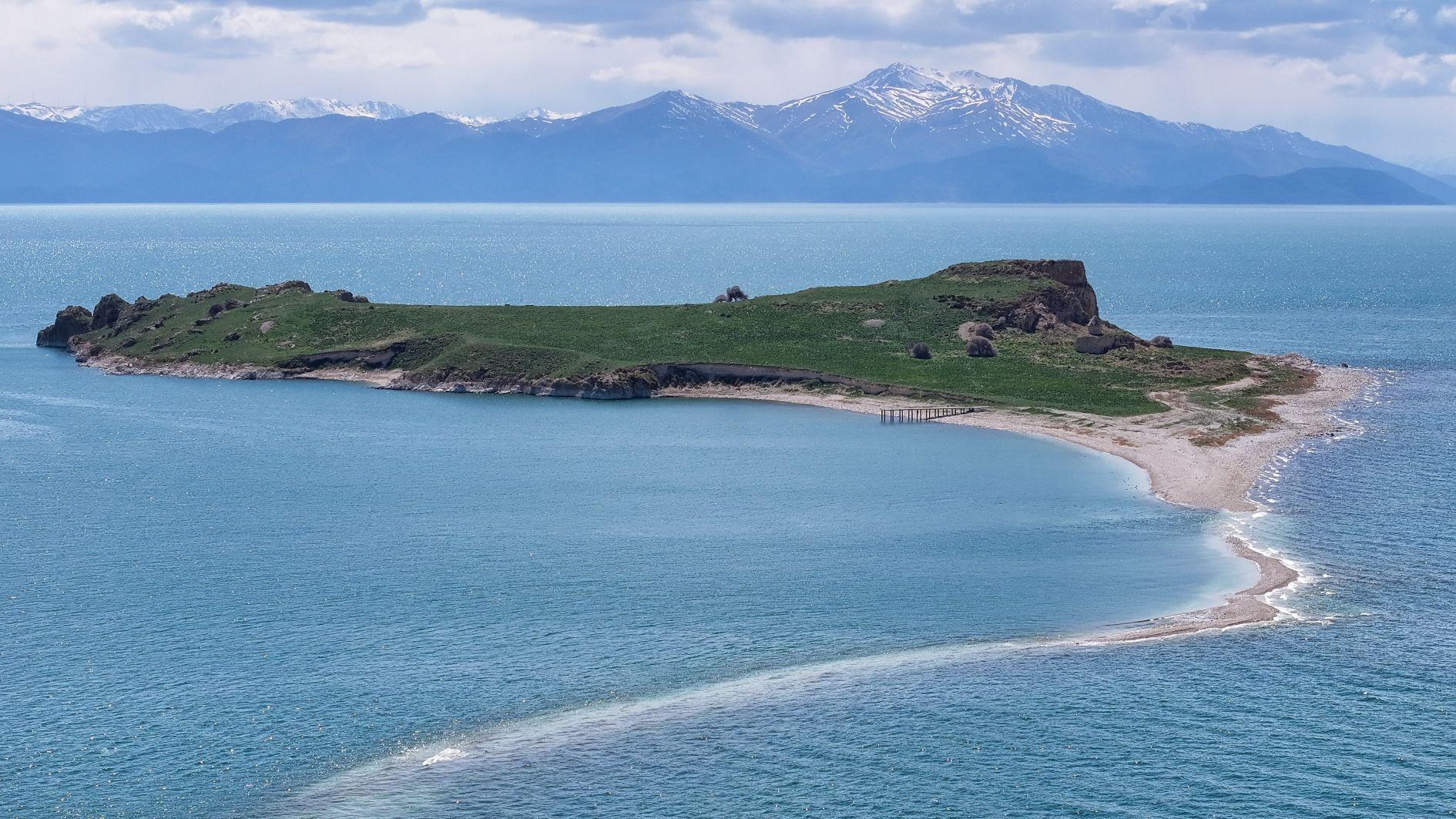Ancient road resurfaces as Lake Van recedes
VAN

As the waters of Lake Van recede, approximately 60 percent of the ancient road — stretching a kilometer and constructed centuries ago to link to Çarpanak Island — has reemerged, bringing submerged sections back into view.
The ongoing drought and intense evaporation are not only exposing this historic roadway but also revealing a wealth of ancient structures and thousands-of-years-old microbialites along the lake's shores, illuminating the region's rich cultural and natural history.
One of the largest islands in the lake, Çarpanak Island is home to the Ktouts Monastery and draws numerous visitors each year with its rich nature and heritage. The road linking the island to the mainland, which is believed to have been constructed centuries ago, has become more visible in recent years as water levels continue to drop.
Currently, about 60 percent of the road lies above the water, and the underwater parts are now more noticeable.
Professor Rafet Çavuşoğlu, chair of the Archaeology Department at Van Yüzüncü Yıl University’s Faculty of Letters, told the state-run Anadolu Agency that the Urartians actively used the Lake Van Basin.
Stating that many settlements around Lake Van date back to the Urartian period, Çavuşoğlu said, “A series of Urartian fortresses were built along the shoreline from Lake Van all the way to Tatvan. We know that there was a Urartian settlement across from Çarpanak Island, and that transportation was maintained both by land and water starting from Van Castle. The Urartians used a transportation system on Lake Van quite extensively.”
The road was wide enough for a horse-drawn car
Çavuşoğlu explained that Çarpanak Island gained importance during the Middle Ages: “A monastery was built on the island. Starting from the 9th century A.D., the monastery became active. It is likely that after the monastery was built, there was a connection between the island and the mainland, and we can say a stone-paved road existed. It appears the road was constructed wide enough to accommodate a horse-drawn cart that would supply the monastery’s needs."
"Today, only part of the church remains, and the site was in use until the 19th century. This road was actively used to meet the needs of the monastery. In recent times, as Lake Van’s waters have receded, we have seen the ancient road emerge. From what we can observe, around 60 percent of the road is now visible. If the drought continues, the island may fully merge with the mainland, bringing the road back into use,” Çavuşoğlu added.
















